#BIM software usa
Explore tagged Tumblr posts
Text
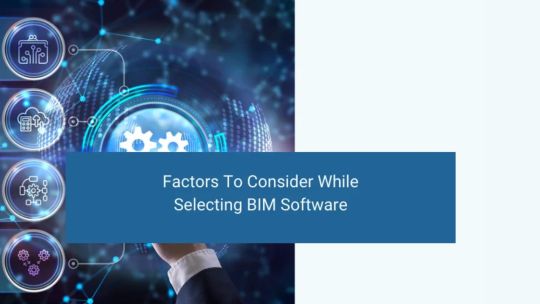
At Cosmere Technologies, we have the right BIM software to offer the best BIM services. If you have any questions, you can contact experts at Cosmere Technologies.
0 notes
Text
How Architectural Bim Services Streamline Building Design

Don’t you have any idea about how Architectural BIM Services USA made huge changes. Here you go. In this rapidly evolving architecture, engineering, and construction industry, there is a huge demand for promising work. Those who complete the project with precision, efficiency, and collaboration are always welcome.
#Architectural BIM Services USA#Bim Service Providers#Architectural Bim Services#Structural Bim Services#Mepf Bim Services#Infrastructure Landscape Mepf#4D Bim Software#5D Quantity Take-Off#Building Information Modelling 6D#7D Bim Asset Management Company#Point Cloud To Bim Conversion#Cad To Bim Modeling Services#Construction Documentation Checklist#Cobie Service India#Bim For Facility Management#Structural Precast Modelling#Revit Fabrication Service India#Bim Consulting Services India#Bim Implementation Service India#Bim Documentation Service#Bim Execution Planning Guide
0 notes
Text
BIM Powerhouses: Top 10 Leading Companies in the USA for 2025

View On WordPress
#bim companies#BIM companies in USA#bim company#BIM Firms#BIM Modelers#bim outsourcing companies in usa#bim outsourcing company#BIM Service Providers#BIM Services#BIM software industry#companies using bim#Pinnacle BIM services#pinnacle infotech
0 notes
Text
Elevate your project success with Cloud Based BIM
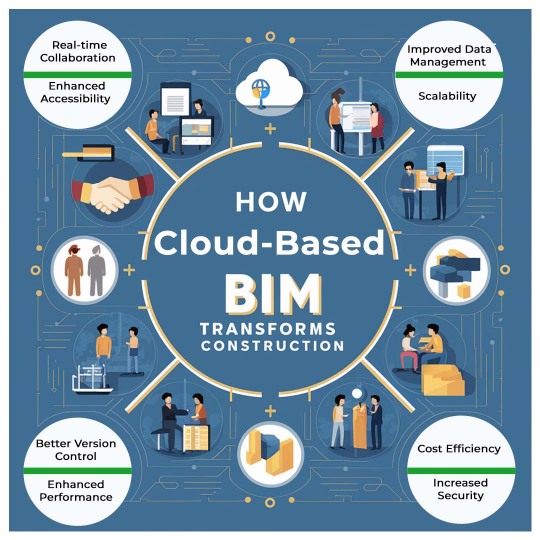
Cloud-based BIM is transforming how construction projects are managed by providing a centralized platform for collaboration and data sharing. It allows teams to access and work on the same model in real time, no matter their location, leading to faster decision-making and fewer errors. Cloud based BIM offers several key advantages:
Real-time collaboration: Teams can work on the same model simultaneously from different locations, improving coordination and accelerating decision-making.
Enhanced Accessibility: Project data is available from anywhere with an internet connection, allowing stakeholders to stay updated and involved regardless of their location.
Scalability: Cloud solutions can easily scale to accommodate large and complex projects, providing the necessary resources without the need for extensive on-site infrastructure.
Want to know more about the advantages of cloud-based BIM, challenges, etc.? Want to discover how this advanced technology revolutionizes collaboration, boosts efficiency, and enhances data management?
Check out our blog on Cloud Based BIM
Our blog covers everything you need to know, from challenges of file-based BIM to cloud based BIM, risk mitigation, etc. Dive in and explore how cloud-based BIM can transform your construction workflow today!
0 notes
Text
Narayana mep is the Best and Leading Revit MEP Online Training course in USA with most experienced professionals. We offer best Revit MEP Online Training class in USA at the best price.
Outcome of Training:
🔹Certificate of Completion
🔹E-Books and Handbooks
🔹NFPA Data Book
🔹NBC Data Book
🔹Live Projects- Indian & International
🔹Lifetime training
𝗙𝗼𝗿 𝗠𝗼𝗿𝗲 𝗗𝗲𝘁𝗮𝗶𝗹𝘀:
𝗖𝗼𝗻𝘁𝗮𝗰𝘁 𝗨𝘀: +91 9900529008
𝗪𝗲𝗯𝘀𝗶𝘁𝗲: https://www.narayanamepblr.com/
#Revit MEP Certification Training Course USA#Revit MEP Training in USA#Revit MEP Training Institute in USA#Revit MEP Software Training in USA#Revit MEP Online Training course in USA#Top 5 Best MEP Training institutes in USA#best mep training institute in USA#BIM online training in USA
0 notes
Text
Professional 3D CAD Modeling Services to Accelerate Your Product Development
In today’s fast-paced manufacturing and product design environment, 3D CAD modeling has become the backbone of innovation and precision. Whether you’re an industrial manufacturer, an architect, or a product designer, the ability to digitally visualize, test, and perfect your ideas before production is invaluable.
Shalin Designs, a trusted name in CAD outsourcing, offers top-tier 3D CAD modeling services to help you design faster, reduce costs, and ensure flawless execution from concept to creation.
🚀 What is 3D CAD Modeling?
3D CAD (Computer-Aided Design) modeling is the process of creating three-dimensional digital representations of physical objects using advanced CAD software such as SolidWorks, AutoCAD, Creo, and Fusion 360.
These models serve as accurate visual and structural blueprints, providing essential data for manufacturing, prototyping, simulations, and design evaluations. 3D CAD modeling helps in reducing material waste, detecting design errors early, and accelerating product delivery timelines.
💡 Why Choose 3D CAD Modeling Services from Shalin Designs?
At Shalin Designs, we believe design precision starts with clarity, creativity, and collaboration. Here’s what makes our 3D CAD modeling service a cut above the rest:
✅ Expertise Across Industries
Our skilled CAD designers have years of experience serving a range of industries including:
Furniture manufacturing
Industrial equipment design
Architectural structures
Consumer product design
Automotive components
Sheet metal and mechanical design
✅ High-Precision Modeling
We create detailed parametric and non-parametric models that are 100% production-ready. Our models align with real-world constraints, tolerances, and manufacturing standards.
✅ Software Flexibility
We work with all leading CAD software platforms and can adapt to your file requirements, design standards, and project workflows.
✅ Cost-Effective Outsourcing
Looking to save up to 50% in design costs without compromising on quality? Shalin Designs provides offshore 3D CAD modeling solutions that meet global standards at competitive prices.
✅ Fast Turnaround Time
Tight deadline? No problem. Our streamlined process and dedicated team allow us to deliver high-quality CAD models quickly — without sacrificing detail or accuracy.
🛠️ Our 3D CAD Modeling Capabilities
We offer end-to-end 3D CAD services for both simple and complex design requirements, including:
1. Concept to CAD Conversion
Have a sketch or an idea? We help you convert hand-drawn concepts, 2D drafts, or even ideas into detailed 3D models for validation and development.
2. Reverse Engineering
Need to recreate a legacy part or product? Our team uses digital measurements or 3D scans to generate accurate CAD files.
3. Mechanical 3D Modeling
Designing mechanical parts, assemblies, or machine components? We specialize in parametric modeling and detailed part analysis.
4. Furniture & Millwork Modeling
We provide detailed furniture and millwork models for custom manufacturing, visualization, and space planning.
5. Architectural & MEP Modeling
From BIM-ready models to architectural components, we create accurate and scalable 3D models for construction and infrastructure projects.
📈 Benefits of Partnering with Shalin Designs
Partnering with Shalin Designs means you gain a reliable design extension to your in-house team. Our clients enjoy:
Reduced product development time
Increased design accuracy
Easy integration with CAM and CNC workflows
Support for prototyping and 3D printing
Enhanced design collaboration via cloud-based file sharing
We ensure confidentiality and security for all your intellectual property. NDAs and service-level agreements are available for long-term partnerships.
🌍 Serving Clients Globally
From startups to large enterprises, Shalin Designs proudly serves clients across the USA, UK, Canada, Australia, and the Middle East. Whether you need a one-time CAD project or a long-term design partner, we deliver world-class service tailored to your goals.
📞 Ready to Digitally Transform Your Designs?
Don’t let your ideas stay on paper. Bring them to life with high-precision 3D CAD modeling from Shalin Designs.
👉 Contact us today to get a free quote or discuss your next design project.
#3DCAD#CADDesign#CADModeling#3DModeling#EngineeringDesign#MechanicalDesign#ProductDesign#SolidWorks#AutoCAD#3DCADServices
1 note
·
View note
Text
Why Clash Detection is the Backbone of Successful Construction Projects: A Deep Dive into BIM Services in the USA
When it comes to building anything—whether it's a house, a clinic, or a huge retail space—planning is everything. In today’s world, thoughtful planning often involves the use of Building Information Modeling (BIM). One of the most essential components of BIM is a feature called clash detection. Although the name might sound specialized, it’s a simple idea that can save builders a significant amount of time, money, and headaches.
In this blog, we’ll explain what clash detection is, why it matters so much, and how BIM service providers in the USA utilize it to enhance building projects every day.
What Is Clash Detection?
Imagine you’re making a puzzle. Everything should fit together just right. But what if one piece is too big, or another one’s in the wrong spot? You’d get stuck. That’s what happens in building, too.
Clash detection is the process of spotting errors or disputes in a building design before construction begins. These conflicts arise when components of the structure, such as plumbing, electrical lines, or air ducts, overlap or intersect with one another.
For example:
A pipe may run through a wall where a beam is already in place.
An HVAC duct may go through the same space as an electrical cable.
A staircase might be placed too close to a wall.
These issues, if not identified early, can cause severe delays, incur additional costs, and lead to safety problems during the construction process.
Why Is Clash Detection So Important?
Clash detection acts like a safety net before anyone even picks up a hammer. Here’s why it’s a game changer:
1. Saves Time
Without clash detection, many issues only show up during construction. Workers may need to stop and wait while the issue is resolved. This slows the whole project down. However, with clash detection, problems are identified and resolved early, which keeps the project moving smoothly.
2. Reduces Costs
Fixing mistakes after construction begins is expensive. Sometimes walls need to be torn down or systems re-routed. But when you find these clashes ahead of time, you can fix them on a computer screen, not at the job site. That’s a big money saver.
3. Improves Teamwork
Clash detection brings together various teams, including architects, engineers, and contractors. Everyone works on the same digital model, allowing them to see how their parts fit in with everyone else’s work. This helps the whole team stay on the same page.
4. Boosts Safety
When clashes are caught early, it means fewer surprises during construction. That means less risk for workers on-site. Safety is always a top priority in any building project.
How BIM Services in the USA Use Clash Detection
In the USA, many construction companies now rely on specialized BIM service providers to handle clash detection. These experts utilize advanced software, such as Autodesk Revit and Navisworks, among others, to create precise 3D models of buildings. Then they use those models to check for clashes.
Here’s how the process usually works:
Model Creation The BIM team creates 3D models for architecture, structure, and MEP (Mechanical, Electrical, Plumbing) systems.
Clash Detection Run These models are brought together in a single environment. The software then scans everything and identifies any overlaps or conflicts.
Clash Reports The system generates reports that show exactly where the clashes occur and which systems are involved.
Resolution & Coordination The BIM team collaborates with engineers and architects to resolve these issues digitally before construction commences.
Final Approval Once all clashes are resolved, the model is approved for construction.
Real-Life Impact
Let’s take an example. A commercial project in Texas utilized BIM clash detection before constructing a large retail center. The software identified over 250 major clashes—from ductwork passing through beams to piping overlapping with electrical systems.
If those problems had not been found in the planning stage, they could have cost hundreds of thousands of dollars and delayed the project by months. But thanks to BIM services, the design was corrected before ground was even broken. The project finished on time and under budget.
Final Thoughts
Clash detection is no longer just a “nice-to-have”—it’s a must in modern construction. It gives everyone on the project a clear view of what’s going on, helps teams avoid costly errors, and keeps the worksite safe.
With the help of skilled BIM service providers in the USA, builders can plan smarter and build better. If you're working on a project—big or small—partnering with a BIM expert who offers clash detection can make all the difference.
0 notes
Text
Everything You Need to Know About Scan to BIM

You are probably well-versed with the term BIM and how it constructs a virtual model of your design to create a detailed process that maps every stage from design to execution. The advancement in technology has introduced another working technique to convert an existing structure into a precise virtual model, Scan to BIM.
Let’s explore more about Scan to BIM Services in USA and understand the process that goes behind it.
What is Scan to BIM?
As designers have mastered the art of model making using BIM, the next breakthrough had to be the as-built models for existing structures. Laser scanning in construction across the USA enables the capturing and scanning in 3D of existing projects.
The information gathered by the scanners is then used to construct a virtual model of the same. This digitized data can then be used for monitoring or redevelopment of the US-based project.
Why is Laser Scanning in Construction Important?
Scan to BIM services have a potential for growth in the AEC industry, especially in the USA, owing to the ease of design and operation it offers. Laser scanning promises reliability with precise capturing of points.
A virtual as-built model aids in the assessment of the structure and accelerates the decision-making process, as each iteration can be applied and the impact can be assessed.
A scanned model can minimize the costs for rework of errors on-site, as the entire process is transparent amongst collaborators, and the model enables coordination amongst members of different teams.
With rapid transformations in the global building and design sector, there is a revolution in construction methods as well, with scanning services being amongst the most fruitful ones.
How Does the Process of Scan to BIM Work in the US-based Projects?
It utilizes a 3D laser Scan to BIM that emits a beam, striking the surface to capture point clouds. The acquired data is then transformed from this point cloud into Building Information Modeling (BIM).
Here is a step-by-step guide to understanding the function better:
As you have all the data from the 3D laser scanner, open the designated software to load the point cloud into the project.
The next step for the conversion of point cloud to BIM involves translating the data into another file format.
Then comes the indexing process, in which scanned data is taken up and added as a cloud file.
Link this data with the project in the .rcp or .rcs format.
Load the data file on the Revit project with the Point cloud tool and position it by picking the most appropriate option among the three displayed ones.
Once the file has been positioned, link the point clouds by clicking open.
Challenges and Limitations of Scan to BIM
Large File Handling: Processing dense point cloud data requires high-performance computing and storage infrastructure, which can be expensive.
Skilled Workforce Requirement: Accurate conversion from point cloud to BIM demands experienced professionals and specialized training.
Time-Consuming Modeling: Manual interpretation and modeling from scan data, especially for intricate structures, can be labor-intensive.
Hardware & Software Costs: High-grade laser scanners and licensed software like Revit, Recap, and Navisworks involve significant upfront investment.
Scan Accuracy Issues: Dust, reflective surfaces, poor lighting, or site obstructions can introduce errors into the scan data, impacting model fidelity.
Lack of Industry Standardization: Inconsistencies in deliverables, LOD expectations, and scan protocols across US firms can create project mismatches.
Integration Challenges: Aligning Scan to BIM within traditional construction workflows and legacy systems may slow adoption.
Site Accessibility Limitations: Tight spaces, active construction zones, or restricted areas can limit full scan coverage.
Problems Solved Using Laser Scanning in the Construction Process
The main motive of laser scanning in construction across the USA is to capture reality and upload it to digital space. The areas catered by it in design and construction are as follows:
Generating Design Solutions
An efficient design is all about a design proposal that not only produces great structures but also caters to the site conditions.
Scanning services in the USA capture the exact site conditions that result in better design decisions with a deeper understanding of context.
Case study: Scan to BIM Modeling for a UK-based Educational Institute
Smooth Construction Phase
The as-built and as-designed information presented in the virtual model aids in the tallying process and clash detection at the design stages.
The feature of virtual installation helps in the identification of any discrepancies that could come up while executing on-site.
A Safe and Sound Design
The rate of construction hazards in the USA can be reduced by adopting these services. The early-stage depiction of potential hazards and proposals for construction safety measures promises a safe workflow.
Building Analysis
Point cloud to BIM facilitates building operation analysis. From structural evaluation to accessibility examination, each aspect of the project can be studied to propose better and more reliable solutions.
A Time-Saver Approach
One of the major challenges faced in the construction industry is delays in the timeline. With the incorporation of laser scanning, the virtual model lets you go through each aspect of design in detail which eliminates the need for frequent site visits.
The clash-detection and early design phase also rule down the need for rework on-site, saving time, resources, and efforts.
Read More: Convert Point Cloud Data into Revit Models: A Step-by-Step Guide
What are the Importance or Advantages of Scan to BIM?
The work generated with laser scanning and BIM has an unmatched quality with precision in detailing and efficiency in the layouts.
The smooth coordination among all stakeholders and designers saves time by removing the need for one team's work to be completed before being passed on to another team. With a single point source, all teams can work simultaneously and stay updated on the project.
A virtual model with intricate details and layouts aids in quick design decisions, and alterations can be assessed on the model itself.
BIM promises a better future not only for the building users but for the environment as well. It can help you evaluate energy efficiency and opt for a sustainable path.
Traditional construction methods have always proven to be costly due to the site reworks they demand. Laser scanning has helped to cut down project costs in the USA by offering a resolved set of drawings that ensures smooth functioning on-site.
Industry Applications of Scan to BIM in the USA
Renovation & Retrofit Projects: Enables accurate documentation of existing buildings for remodeling, tenant improvements, and adaptive reuse.
Facility Management: Used for digital twins that support maintenance scheduling, asset tracking, and space utilization in commercial facilities.
Historic Preservation: Digitally records heritage sites with high accuracy, aiding in restoration efforts while complying with U.S. preservation standards.
Infrastructure Projects: Applied in highways, bridges, tunnels, and airports for condition monitoring and lifecycle asset management.
Construction Verification: Assists in as-built validation, clash detection, and construction progress tracking for US-based contractors and owners.
Code Compliance & QA/QC: Helps meet local building codes, safety regulations, and enhances quality assurance through accurate visual documentation.
MEP Coordination: Improves multi-disciplinary coordination across MEP systems, reducing rework and ensuring constructability.
Government & Institutional Use: Mandated by federal and state agencies for public infrastructure upgrades and capital improvement programs.
Heading Towards a Brighter Future
As we are headed towards a tech-inclined era, the AEC industry across the USA is not behind. With transformations brought into the design world, BIM is one of the fastest-growing techniques, and when merged with laser scanning, the results are multifold. It lets you enter the digital world of a structure fed with data to help you understand the operations and management of the project.
A collaboration of different teams on this platform can promise extremely functional designs inclining towards sustainability. Take advantage of the high accuracy and fast speed of these techniques and let your projects be executed with unmatched quality.
Owing to a seamless flow of design and construction process, this technology is widely being adopted by design teams. With further enhancements and innovations, the AEC sector is sure to undergo a rapid transformation for the best results.
0 notes
Text
Why Electrical BIM Modeling is Reshaping Construction Projects Across Illinois
Over the past decade, Building Information Modeling (BIM) has completely changed how construction projects are designed and managed in the United States. But while BIM is often associated with architecture and structural engineering, one of the most impactful and often overlooked applications lies in the electrical discipline.
In Illinois, a state known for its architectural landmarks and diverse construction environment, Electrical BIM modeling is helping design teams, contractors, and facility managers execute smarter, faster, and more cost-efficient projects.
What Is Electrical BIM Modeling?
Electrical BIM modeling is the process of creating a detailed 3D digital representation of all electrical components within a building, think lighting systems, conduits, panels, cable trays, and outlets. But this isn’t just about pretty models. It’s about embedding real, functional data into every component, such as load calculations, circuiting logic, and code compliance.
Using BIM software platforms like Autodesk Revit, electrical engineers and designers can simulate how systems will behave in real life, coordinate with other trades, and detect potential issues long before construction starts.
Why It’s Especially Important in Illinois
Illinois is home to both dense urban development in Chicago and wide-ranging infrastructure across suburban and rural areas. Projects here face a broad range of design challenges: older buildings with outdated electrical systems, varying local codes, and aggressive construction schedules.
Here’s where Electrical BIM modeling makes a difference:
Code Compliance & Permitting In Illinois, each city can enforce its own version of the electrical code, based on the National Electrical Code (NEC). By integrating these requirements into a BIM model, design teams can automatically check compliance and reduce back-and-forth with permitting authorities.
Clash Detection with Other Trades Electrical BIM makes it easy to detect collisions, say, a conduit running into a mechanical duct or steel beam before crews ever hit the job site. In the tight, layered infrastructure of downtown Chicago buildings, this is a game-changer.
Accurate Prefabrication For contractors working on tight schedules (which is common in Illinois winters), prefabrication is key. With a well-coordinated BIM model, electrical components can be prefabricated offsite with high accuracy, minimizing labor and waste on site.
Easier Renovations and Retrofits Many Illinois buildings, especially in places like Springfield and Joliet, are more than 50 years old. Electrical BIM modeling helps teams map out existing conditions and plan upgrades efficiently, even when original documentation is missing or outdated.
Even local school districts and public housing authorities are beginning to require BIM coordination for new projects, helping them manage their buildings more effectively long-term.
Collaborate now with Clove Technologies for precise and efficient results.
Check out this blog — Why Mechanical BIM modeling in Illinois is Essential for Modern AEC Projects
Keywords : Plumbing BIM modeling, Mechanical BIM modeling in Texas, Fire Protection BIM modeling in Texas, Fire Protection BIM modeling in Texas, Low Voltage BIM modeling in Florida, Plumbing BIM modeling in Georgia, Mechanical BIM modeling in Illinois, Fire Protection BIM modeling in Illinois, Electrical BIM modeling California, Low Voltage BIM modeling, CaliforniaBIM modeling in Georgia, Scan to BIM, Scan to BIM in Georgia, H.V.A.C 3D Modeling in US / USA, Plumbing 3D Modeling, H.V.A.C 3D Modeling.
0 notes
Text
Exploring Structural Engineering: Careers, Courses, and Opportunities
Introduction
Structural engineering is a specialized branch of civil engineering that focuses on the design, construction, and maintenance of infrastructure such as buildings, bridges, tunnels, and dams. Structural engineers play a crucial role in ensuring that structures can withstand environmental forces and human usage while maintaining safety, durability, and functionality.
In this blog, we will explore what structural engineers do, courses available, career opportunities, and salary prospects for those interested in this field.
1. What Does a Structural Engineer Do?
Structural engineers are responsible for analyzing and designing structures to ensure they are strong, stable, and resistant to environmental pressures. Their key responsibilities include:
Structural Design & Analysis: Creating blueprints and using software like STAAD Pro, ETABS, and AutoCAD to model structures.
Material Selection: Choosing the best materials for durability, sustainability, and cost-efficiency.
Safety & Compliance: Ensuring buildings comply with government regulations, safety codes, and environmental standards.
Disaster-Resistant Construction: Developing earthquake-resistant buildings and flood-proof structures.
Inspection & Maintenance: Assessing existing structures for repairs and enhancements to prolong their lifespan.
Structural engineers work closely with architects, contractors, and construction managers to bring projects to life.
2. Courses for Structural Engineering
Aspiring structural engineers must pursue relevant courses that provide theoretical knowledge and practical training. The following are the major academic paths:
Undergraduate Degree (B.Tech/B.E. in Civil Engineering)
Duration: 4 years
Topics Covered: Mechanics of materials, structural analysis, fluid mechanics, geotechnical engineering
Institutes: IITs, NITs, SCOE, and other top engineering colleges
Postgraduate Degree (M.Tech/M.S. in Structural Engineering)
Duration: 2 years
Specializations: Advanced structural design, earthquake engineering, bridge engineering
Institutes: IITs, IISc, SCOE, and top private universities
Certification & Diploma Courses
Short-term courses in Building Information Modeling (BIM), STAAD Pro, Revit, and SAP2000.
Offered by universities and online platforms like Coursera, edX, and Udemy.
3. Career Opportunities & Job Roles
Structural engineers are in demand across various industries, including construction, real estate, infrastructure development, and research institutions. Some key job roles include:
Structural Design Engineer: Focuses on creating designs and blueprints for buildings and bridges.
Construction Project Engineer: Oversees construction projects and ensures compliance with engineering plans.
Bridge & Tunnel Engineer: Specializes in designing and maintaining transportation infrastructure.
Geotechnical Engineer: Works on foundation and soil analysis to ensure structural safety.
Structural Consultant: Advises on material selection, design modifications, and cost-effective solutions.
Academic & Research Engineer: Engages in teaching and developing innovative construction techniques.
With the rapid growth of urban infrastructure, the demand for structural engineers is expected to rise significantly.
4. Salary of a Structural Engineer
The salary of a structural engineer varies based on factors like experience, location, and industry. Below is an estimated salary range in India:
Experience Level
Average Salary (Per Annum)
Entry-Level (0-3 years)
₹4 - ₹7 LPA
Mid-Level (3-7 years)
₹7 - ₹12 LPA
Experienced (7+ years)
₹12 - ₹20 LPA
Senior Positions
₹20+ LPA
Internationally, structural engineers in countries like the USA, UK, and UAE earn significantly higher salaries, making it a lucrative career path for those willing to explore global opportunities.
Why Choose SCOE for Structural Engineering?
SCOE offers a comprehensive civil engineering program with a strong focus on structural engineering. Here’s why you should consider studying at SCOE:
Industry-Oriented Curriculum: Practical exposure to real-world projects and advanced structural design software.
Experienced Faculty: Learn from experts with industry and research experience.
State-of-the-Art Labs: Well-equipped structural mechanics and geotechnical engineering labs.
Internships & Placement Support: Collaborations with top construction firms and government agencies for job placements.
Conclusion
Structural engineering is a rewarding and high-demand career that combines technical expertise with creativity. As urbanization continues to grow, structural engineers will be at the forefront of designing safe, sustainable, and innovative structures.
If you are passionate about building the future, enrolling in SCOE’s structural engineering program can be your stepping stone to a successful career!
SCOE – Your Pathway to a Future in Structural Engineering!
0 notes
Text
How to Become a BIM Manager: Skills, Education, and Certification
With the construction industry becoming increasingly digital and data-driven, the demand for skilled Building Information Modeling (BIM) Managers is soaring. If you are passionate about technology and the built environment, a career as a BIM Manager offers excellent prospects. This article explores the steps to become a BIM Manager, the essential skills and certifications, and how Technostruct Academy can help you get there.
Educational Background
To start your journey toward becoming a BIM Manager, a degree in Architecture, Civil Engineering, Construction Management, or a related field is typically required. This foundational knowledge helps in understanding the intricacies of construction and design.
Postgraduate diplomas or certifications in BIM further strengthen your qualifications. While academic credentials are crucial, industry-specific training is what sets you apart.
Essential Skills for BIM Managers
BIM Managers require a unique blend of technical, managerial, and interpersonal skills:
Proficiency in BIM Software: Tools like Autodesk Revit, Navisworks, AutoCAD, and BIM 360 are essential. Knowledge of clash detection, model coordination, and data management is also critical.
Project Management: The ability to lead teams, manage timelines, and ensure quality is key.
Communication: A BIM Manager interacts with architects, engineers, and clients, requiring excellent communication and negotiation skills.
Problem Solving: Projects often encounter design conflicts or software challenges. A BIM Manager must troubleshoot and implement solutions efficiently.
Certifications That Boost Your Career
Several industry-recognized certifications can enhance your credibility:
Autodesk Certified Professional in Revit or Navisworks
BuildingSMART Professional Certification
RICS BIM Manager Certification
These certifications validate your expertise and improve your job prospects.
Career Path and Opportunities
Starting as a BIM modeler or coordinator provides hands-on experience and a stepping stone to management roles. As you gain expertise, you can advance to Senior BIM Manager, BIM Director, or even Chief Technology Officer in large firms.
Countries like the USA, UK, UAE, and Australia have a high demand for BIM Managers due to mandates for BIM implementation in public projects.
How Technostruct Academy Can Help
Technostruct Academy has emerged as a leading institute for BIM education. Their structured BIM Manager course is tailored for real-world application and includes:
Live Internship Opportunities: Collaborate on live projects with top US-based firms.
Advanced Software Training: Hands-on sessions with Revit, Navisworks, and other BIM tools.
Mentoring by Industry Experts: Learn from professionals who understand global BIM standards.
Placement Assistance: Technostruct Academy provides job readiness support and connects students with global job opportunities.
Their curriculum is designed not only to teach software but to develop project leadership, model coordination, and quality control skills essential for BIM Managers.
Final Thoughts
Becoming a BIM Manager is a journey of continuous learning and upskilling. The role is challenging yet rewarding, with immense growth potential. Whether you're a recent graduate or a working professional looking to transition into digital construction, Technostruct Academy offers the tools, training, and mentorship to help you succeed. By investing in quality education and practical experience, you can unlock a successful career as a BIM Manager.
0 notes
Text
Get reliable Architectural BIM Services in USA for accurate modeling, design and planning Improve construction efficiency with our expert BIM solutions.
Plinnth is a unique tech consultant that offers Next-generation 5D Building Information Modelling with lifecycle BIM centric optimizations by leveraging big data & project controls as a key driver for efficiency. Plinnth combines 5D BIM and augmented reality devices to transform construction, maintenance and operations. Plinnth synergizes Best Practices and next generation technologies by augmenting its deep, hands on experience with building hardware, software, and the relationships that matter in AR-Wearables-IIOT-BIM-Smart Tools
0 notes
Text
MEP Course In Hyderabad | Rite Academy

Are you a diploma or engineering graduate looking to elevate your career in the construction and infrastructure industry? Do you want to learn practical, job-oriented skills that are in high demand across the globe? If yes, then enrolling in an MEP Course in Hyderabad could be your game-changer — and there’s no better place to start than Rite Academy, Hyderabad’s leading MEP training institute.
In this comprehensive guide, we’ll explore what MEP is, why it's important, who can take the course, the scope of MEP professionals in India and abroad, and why Rite Academy is your best choice to learn from industry experts. Let’s dive in.
What is MEP?
MEP stands for Mechanical, Electrical, and Plumbing — three essential pillars that ensure functionality, comfort, and safety in any modern building. Whether it's a residential apartment, commercial tower, shopping mall, hospital, airport, or metro station, MEP systems are the heart of infrastructure.
Mechanical deals with heating, ventilation, and air conditioning (HVAC) systems.
Electrical includes power supply, lighting, fire alarms, and energy-saving systems.
Plumbing focuses on water supply, drainage, sewage, and fire suppression systems.
Without MEP engineering, a building is just a shell. With it, structures come to life and meet human needs efficiently.
Why Choose an MEP Course in Hyderabad?
Hyderabad is a booming metro with a growing real estate and infrastructure industry. The demand for certified MEP professionals has increased, with companies seeking individuals who can work on large-scale projects and follow international standards.
Taking an MEP Course in Hyderabad allows you to tap into this booming industry. You gain hands-on experience, learn software like AutoCAD, Revit MEP, and Carrier HAP, and become job-ready for national and international projects.
Who Can Join the MEP Course?
If you’re wondering whether you’re eligible for this course, here’s the good news: MEP training is open to a wide range of candidates, including:
Diploma holders in Mechanical, Electrical, or Civil Engineering
B.Tech / BE graduates from Mechanical, Electrical, or Civil branches
Working professionals looking to upgrade their skills
Freshers aiming to get into core technical jobs
Rite Academy offers customized MEP modules for both beginners and working professionals.
Career Opportunities After MEP Course
Completing a certified MEP Course in Hyderabad opens up diverse career paths in India and abroad. Some of the job roles you can explore include:
HVAC Design Engineer
Electrical Design Engineer
Plumbing Engineer
MEP Project Coordinator
Site Engineer
MEP Estimation & Planning Engineer
BIM Modeler
Rite Academy has a strong placement network and regularly connects students with recruiters and contractors in UAE, Saudi Arabia, Qatar, Oman, and India.
Why Choose Rite Academy for MEP Course in Hyderabad?
Among the numerous institutes offering MEP courses, Rite Academy stands out for its commitment to quality, practical training, and career support. Here’s why students trust us:
1. Industry-Experienced Trainers
Our faculty consists of MEP professionals who bring years of experience in both national and international projects. They don’t just teach — they mentor you with real-world insights and problem-solving skills.
2. State-of-the-Art Labs and Software Training
We believe in “learning by doing.” Our practical labs are equipped with advanced tools and working models. You’ll also master industry software like:
AutoCAD MEP
Revit MEP
HAP (Hourly Analysis Program)
Dialux
Navisworks
MS Project
3. Flexible Batches and Online Classes
Whether you’re a working professional or a student, Rite Academy offers flexible weekday and weekend batches. We also provide online MEP classes with live instructor support.
4. International Curriculum
Our syllabus is designed to meet the standards followed in Gulf countries, the USA, and Europe. You will learn not just Indian codes but also international codes like ASHRAE, NFPA, and IPC.
5. 100% Placement Support
We don’t stop at training. We assist with resume building, mock interviews, and direct placement opportunities with our partner companies in India and abroad.
Course Modules Offered by Rite Academy
Our MEP course is divided into multiple modules to give you a complete skillset:
HVAC (Mechanical)
Basics of HVAC and psychrometry
Load calculations using Carrier HAP
Duct design, chilled water systems
VRF systems, heat pumps
AutoCAD HVAC Drafting
Revit MEP for HVAC
Electrical
Basics of electrical engineering
Lighting and power systems
Cable sizing and load calculations
Fire alarm and emergency systems
Single-line diagrams (SLD)
Revit MEP Electrical Design
Plumbing & Firefighting
Domestic water supply systems
Drainage and sewage systems
Rainwater harvesting
Fire sprinkler systems and pump rooms
Design and drafting in AutoCAD
Revit MEP Plumbing Module
Each module ends with a mini project and certification exam.
Certifications You’ll Receive
After successful course completion, you’ll receive:
MEP Diploma Certificate
Module-wise Certificates (HVAC, Electrical, Plumbing)
Software Training Certificates (AutoCAD, Revit, HAP)
Internship/Project Work Certificate (Optional)
Rite Academy certifications are widely accepted by MEP consultants, contractors, and builders across the world.
The Global Demand for MEP Professionals
According to industry data, the demand for skilled MEP professionals will grow by 20% by 2030. The Middle East and Europe are constantly hiring MEP engineers due to ongoing development in:
Airports and Metro Projects
Smart Cities & Green Buildings
Commercial and Residential High-rises
Hospitals, Hotels, and Data Centers
With the right MEP course, you can build a future-proof career. That’s where Rite Academy empowers you.
Frequently Asked Questions (FAQs)
Q1. What is the duration of the MEP Course at Rite Academy?
A: The regular course duration is 2 to 3 months, including project work. Fast-track options are also available.
Q2. Do you offer job assistance after the course?
A: Yes. We offer complete placement support, including job referrals, resume preparation, and mock interviews.
Q3. Can I do the course online?
A: Absolutely. We provide online live classes with recorded sessions and assignments.
Q4. Is this course valid in Gulf countries?
A: Yes. Our curriculum covers Gulf standards and international codes. Many students have successfully placed in UAE, Saudi Arabia, and Oman.
Q5. What is the fee for the MEP course?
A: Our fees are affordable and provide the best value for money. Contact Rite Academy directly for current offers and discounts.
Conclusion
The construction industry is rapidly evolving with a strong need for trained MEP engineers who understand design, efficiency, and sustainability. By joining a well-structured MEP Course in Hyderabad, you open doors to exciting opportunities in India and overseas.
Rite Academy is more than a training center — it’s your launchpad to a successful engineering career. With expert trainers, global curriculum, and 100% placement support, we ensure that your time with us turns into long-term professional growth.
Don’t wait to start building your future. Join Rite Academy today and become a certified MEP professional ready to lead the next generation of smart infrastructure.
Conclusion
CONTACT US;
9121921999
EMAIL ID;
ADDRESS;
Flat No 402, 11-4-659, Bhavya Farooqi Splendid Towers, Red Hills, Lakdikapul, Hyderabad, Telangana 50000
0 notes
Text
On September 28, Boao Forum for Asia (BFA) held the Second Conference of International Science, Technology and Innovation Forum (ISTIF). As a major forum of the conference this year, the session “Digital Building, Future City” was successfully held.
The session was divided into two parts: keynote speech and roundtable discussion, hosted by Yidong He, Director of Bridge Technology at Parsons, USA. Eleven guests from China and overseas were invited to discuss the development of smart cities and international cooperation in the digital era and to address the challenges of the new pneumonia epidemic and boost the global economy.

Yidong He

Cheng Su
In the keynote speech session, Cheng Su, assistant president of the South China University of Technology and deputy director of the State Key Laboratory of Subtropical Building Science, commented that with the implementation of the construction strategy of the Guangdong-Hong Kong-Macao Greater Bay Area, the comprehensive management and control of urban all-spatial resources in the Greater Bay Area under the disaster environment has become an increasingly urgent topic to be addressed.
Su took the seismic risk assessment of the North Campus of the South China University of Technology as an example to elaborate the urban seismic disaster risk assessment strategy based on the BIM-GIS platform it is developing. The platform enables the rapid establishment of urban building complex exposure models and urban building complex seismic vulnerability curves, thus obtaining more reasonable high-resolution city-level seismic loss maps. This is particularly beneficial to the seismic risk assessment in the Guangdong-Hong Kong-Macao Greater Bay Area.

Jian Yang
Jian Yang, Chairman and President of the Zhujiang Foreign Capital Architectural Design Institute Co., Ltd. Guangzhou, addressed his opinion based on the topic "Consistent Design Thinking and Practice of Industry-wide Mode and Figure". In his presentation, Yang elaborated on how to solve the problems of efficiency, effectiveness and efficiency of BIM forward design, so as to realize the full-establishment BIM forward design with full staff, full project, full profession, full process, full support and full chain. On the basis of this, the practice of model-real consistency will be continued, trying to form a complete technical route of "model-real consistency" to provide a reliable digital base for the intellectualization of engineering projects.
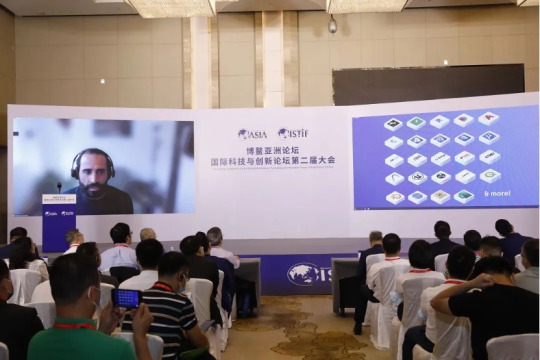
Matteo Cominetti
Matteo Cominetti, CEO of Speckle, an international open-source platform, mentioned that the construction industry itself has achieved more innovation than ever as a result of open-source software, which is not a zero-sum game for companies, but a business model. For Speckle, at its core is a composable object model similar to a database, which allows users to combine, store and access different data for free through the platform, allowing all parties in a design and build project to share large professional files in the 3D format and automate their work in real-time.
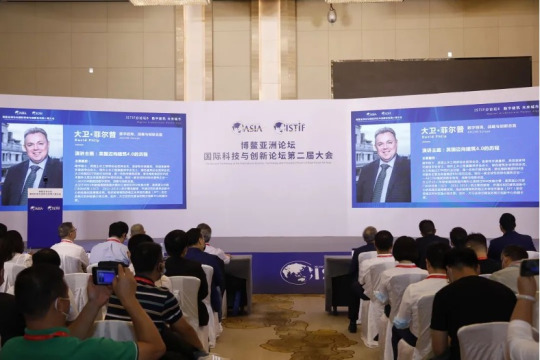
David Philp
David Philp, Director of Digital Consulting, Strategy and Innovation at AECOM Europe, discussed in detail the UK's journey towards Construction 4.0. As he mentioned, the increasing number of digital twins and innovative modeling systems are empowering the community and profession to work efficiently. BIM as a highly specific tool to produce higher and better results, measurements, insights and investment decisions with fewer inputs, especially for new capital projects, enables more long-term insights, better measurement methods and feedback, and higher value.
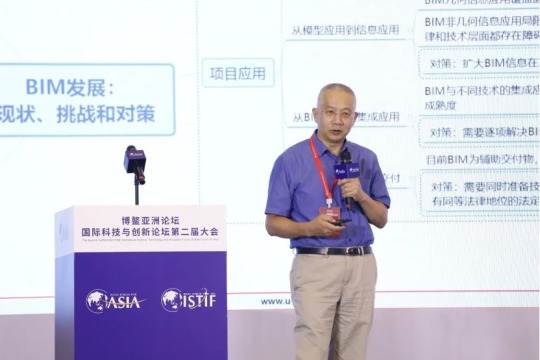
Guanpei He
Guanpei He, BIM expert and Chairman of Ubiquitous Technology Limited Guangzhou, analyzed in detail the relationship between BIM and digital construction, intelligent construction and smart construction. He also discussed the BIM application environment faced by Chinese enterprises, the promotion mode of BIM in China, and the current situation, challenges and countermeasures of BIM development. He especially pointed out that in order to expand the application of BIM in construction scenes and integrated data, the primary issue is to solve the problem of integrated application of BIM and different technologies, so that BIM can become a technical condition for statutory delivery.
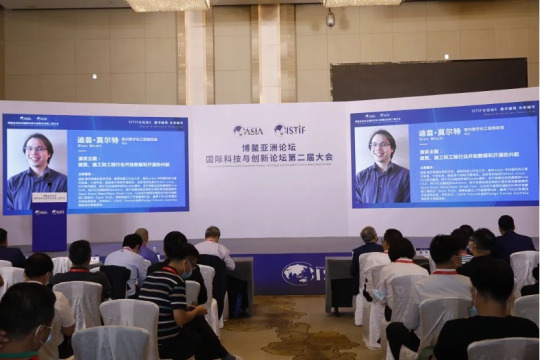
Dion Moult
Dion Moult, Emerging Digital Engineering Manager at Lendlease, talked about how open-source data is one of the only means of solving the problems with the current approach to creating digital buildings, and celebrating that with the explosion of new technologies, the industry will shift from a vendor-centric approach to a native open data approach which puts users back in control of the digital future.



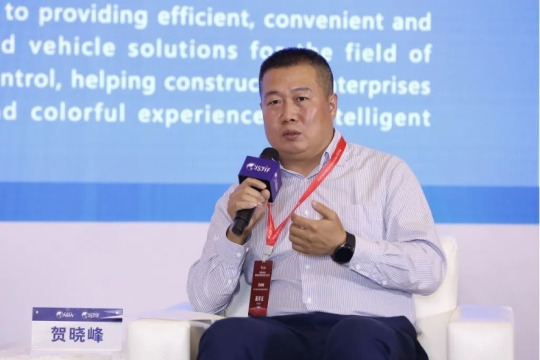

Several guests joined the following roundtable discussion, they were, Yi Jiang, Managing Director of Huaxin Group Co., Ltd, Jinrong Tan, Professor of the Department of Electrical and Computer Engineering, Faculty of Science and Technology at the University of Macau and IEEE International Science Ambassador, Yichuan Deng, Managing Director of Guangzhou Huajian Intelligent Technology Co., Ltd, Nan Hu, Professor of the School of Civil Engineering and Transportation of South China the University of Technology, and Xiaofeng He, Marketing Director of Shenzhen Daoer Intelligent Control Technology Co., Ltd. They discussed the prospect and future of digital building development with their own experiences around topics such as microwave displacement sensing for elevator IoT, three fundamental dynamics of digital empowerment enterprises in the construction industry, digital building under 3D printing technology, and intelligent import/export management of digital building.
0 notes
Text
Future-Ready BIM Software: Elevate Your Designs with Innovation
Building Information Modeling (BIM) has revolutionized the architecture, engineering, and construction (AEC) industry by offering smarter, more efficient workflows. From project planning to facility management, BIM software enables seamless collaboration, cost reduction, and data-driven decision-making.
What is BIM Software?
BIM software allows professionals to create digital representations of buildings and infrastructure, integrating 3D models with data like material specifications, scheduling, and cost estimates. It enhances coordination among stakeholders and minimizes errors during construction.
Top BIM Software in 2025:
Here are the top BIM software tools transforming the industry:
1. Autodesk Revit: A widely used BIM tool, Autodesk Revit offers parametric modeling, collaboration features, and documentation tools. It supports architects, engineers, and contractors in design, visualization, and construction planning.
2. Graph iSOFT Archicad : Archicad is known for its user-friendly interface and powerful design capabilities. It provides seamless collaboration, automated documentation, and real-time visualization for architects and designers.
3. Bentley OpenBuildings Designer: This tool is ideal for large-scale infrastructure projects. It integrates structural, mechanical, and architectural elements, improving project coordination and efficiency.
4. Trimble Tekla Structures: Tekla Structures focuses on structural design and detailing. It is widely used in steel and concrete construction, offering high accuracy in modeling and fabrication.
5. Vectorworks Architect: This software is preferred by architects for its flexible design and modeling tools. It supports 2D and 3D workflows and offers BIM capabilities with enhanced visualization.
6. Dassault Systèmes CATIA: CATIA is a powerful BIM solution used in complex engineering and architectural projects. It is widely used in aerospace and industrial design, enabling precise modeling.
7. Nemetschek Allplan: Allplan is known for its robust structural and architectural modeling tools. It enables seamless collaboration between engineers and architects.
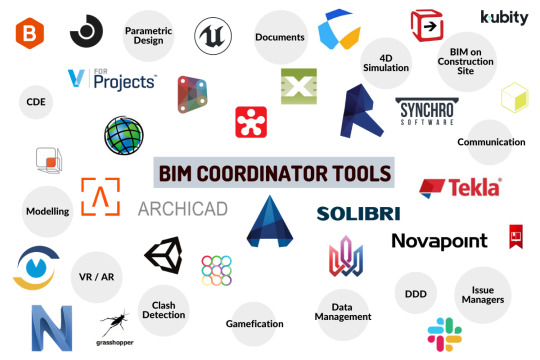
Case Studies: BIM Software in Action
Case Study 1: Sustainable Commercial Complex with Autodesk Revit
Project: Green Office Tower, Mumbai, India Challenge: The architectural firm needed to design a sustainable, energy-efficient commercial complex while minimizing material waste. Solution: Autodesk Revit's energy analysis tools helped optimize natural lighting and ventilation. Clash detection features prevented design errors, ensuring smooth coordination between architects, engineers, and contractors. Results: The project achieved a 30% reduction in energy consumption and a 15% cut in overall costs. The design team reported a 40% improvement in workflow efficiency due to streamlined collaboration.
Case Study 2: Precision in Bridge Construction with Tekla Structures
Project: Steel Bridge Project, Germany Challenge: The company needed a solution to improve accuracy in steel detailing and reduce material wastage. Solution: Tekla Structures enabled precise steel modeling, detailing, and fabrication planning, reducing manual errors. Integration with CNC machines ensured seamless prefabrication. Results: The firm reduced material waste by 15%, improved construction accuracy, and completed the project 20% ahead of schedule.
Case Study 3: High-Rise Residential Development with Archicad
Project: Luxury Apartment Complex, New York, USA Challenge: The real estate developer required a BIM solution to enhance collaboration between designers, engineers, and contractors for a 40-story residential tower. Solution: Graphisoft Archicad facilitated real-time collaboration, reducing communication gaps. The software's automated documentation streamlined approvals and compliance. Results: The project was completed 10% ahead of schedule, with a 12% reduction in costs. The BIM workflow significantly improved design accuracy, leading to fewer on-site reworks.
How to Choose the Right BIM Software:
Selecting the best BIM software depends on factors such as:
Project Type: Structural, architectural, or MEP-focused software.
Collaboration Needs: Cloud-based vs. desktop solutions.
Budget: Consider licensing costs and scalability.
Integration: Compatibility with other tools like AutoCAD, Rhino, or VR applications.
Conclusion:
BIM software continues to shape the future of construction by enhancing design accuracy, improving collaboration, and optimizing costs. With tools like Revit, Archicad, and Tekla Structures, AEC professionals can achieve greater efficiency and sustainability in their projects. Choosing the right BIM software ensures smoother project execution and long-term success in the industry.
0 notes
Text
Contact Us Structural Engineering Consultancy Services in Texas, USA

CAD Outsourcing Consultant, we are your premier destination for top Structural Engineering Consultancy Services. With a commitment to excellence, we specialize in providing a wide range of CAD solutions to meet your Structural Engineering Services needs. Our expertise in Structural Engineering Services, including Outsource Structural CAD Drafting Services, Structural 3D Modeling Services, and Structural 2D Drafting and Detailing Services. We understand the intricacies of high-rise structures and skyscrapers, offering specialized High Rise Structures Skyscraper Services. When it comes to precision, we excel in delivering Structural Fabrication Drawing Services, ensuring that your project moves seamlessly from design to construction. Our CAD Services are comprehensive, catering to the diverse requirements of clients across industries. Contact us today to discuss your Structural BIM project requirements.
Why choose Tekla Structural Engineering Services? - Advanced technology and software solutions
- Comprehensive suite of services, including BIM expertise
- High-quality documentation and cost savings
- Customization to meet project requirements
- Global recognition and credibility
- Collaboration and coordination capabilities
- Scalability for projects of all sizes
- Extensive support and training resources
We offer our Structural Engineering Services Texas and covered other cities: New York, Los Angeles, San Francisco, Las Vegas, Nevada, Arizona and Utah.
Visit Us: https://www.cadoutsourcing.net/structural-engineering-services/texas-structural-engineering-services.html
Software Expertise: AutoDesk AutoCAD, Revit, Tekla Structures, STAAD.Pro, SOLIDWORKS, ZWCAD, AutoDesk Navisworks, 3Ds Max, Inventor, Showcase, ReCap, Infraworks 360, Civil 3D.
For more Information: Website: https://www.cadoutsourcing.net/cad-design-drafting/structural-services.html
If you are looking for best Structural Engineering Services? then Contact Us CAD OUTSOURCING CONSULTANTS.
Check Out my Latest Article "Why Outsource Structural Detailing Services and It's Benefits" is now available
#StructureEngineering#StructureServices#TeklaStructure#FabricationDrawing#Building#Engineering#CADServices#CadOutsourcing#CadOutsourcingCompany#CAD#CADD#CADDrawing#Revit#AutoCAD#Tekla
2 notes
·
View notes